In this article, we will be discussing the best bulbous houseplant to have indoors. When we think of what plants to grow indoor we often think about colourful leaf plants and flowering plants such as bromeliads, cacti and succulents, orchids, palms and ferns, but we do not think about bulbs.
These cannot only add beautiful blooms to our home but more importantly, some have beautiful scents that add an extra dimension to our homes.
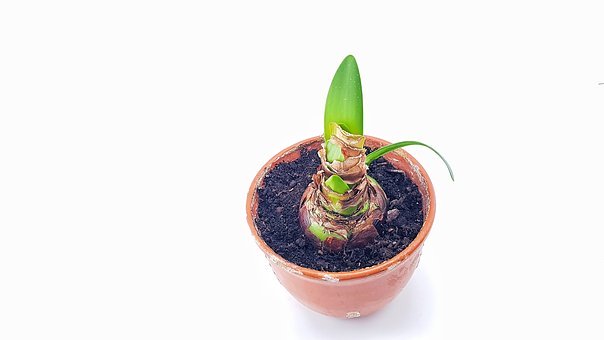
Bulbs, in general, are easy to grow, have less chance of failure and are easy to grow and propagate. I have talked about outdoor bulbs in previous articles part 1 and part 2. Some of these bulbs also do well indoors, whilst other bulbs are only suitable to grow inside because they are too tender.
The first thing that we must be clear is when I am talking about bulbs I am referring to true bulbs, rhizomes, tubers and corms. The definition of each you can find in my glossary of gardening terms. I may refer them to the common name of bulbs, but only a few really are.
This is because when you buy these plants they are sold as bulbs and I do not want to depart from this usage.
Even us gardeners can be slack with gardening terms. All the terms used have a common feature that they are a storage vessel underground that can grow into a beautiful plant.
What follows are the bulbs, rhizomes, tubers and corms that can be grown as indoor plants:
ACHIMENES HYBRIDS (Cupid’s Bower)
This named hybrids are grown from small rhizomes (underground stems). The plant that is produced can either grow upright or trailers. Some varieties can grow both ways.

It is easy indoor plant to look after and if you do it will greatly reward you with masses of richly coloured flowers that come in blue, purple, or pink from summer to late autumn. The flowers are not the only attractive feature of the plants, as it has glossy leaves. It does have a tendency to become leggy over time, so will require pinching out the growing tips, as the stems grow.
This will also promote the formation of side-shoots and help to keep the plant compact. The flopping nature of the plant leads to be ideally grown in hanging baskets.
To grow plant the rhizome, 5 to each 13cm diameter pot, just below the compost surface in February to April in a warm windowsill. At first water little until growth is going strong.
Thick sticks may be required to support the plant in trailing varieties.
It is best to grow in moderate warmth and humidity in light shade. It is important that the compost is moist before it flowers. After that, you can reduce the amount of water given to the plant. Store in a frost-free place over winter. Before planting again, turn out the pots, separate the rhizomes and then repot individually in fresh compost in February and April.
CANNA HYBRIDS (Indian Short)
You can grow outside but you can grow more tender varieties inside. The plant has large erect banana-shaped leaves and a sword-like flower spike. One of the best to grow indoor is ‘Lucifer’ which is shorter than most, only growing up to 60cm.

To grow, plant in early spring the rhizome in 18cm diameter pot full of multipurpose compost. Keep the plant warm and do not water until new growth is observed.
All garden cannas are not suitable to be grown indoors, you must look for varieties that are suitable to be cultivated indoors. Once it has finished flowering, cut back the spike and allow the plant to naturally die back. In the following spring, remove the rhizomes and propagated if necessary before planting once again. Grow in a warm, bright and in good ventilated area – A bright window is ideal. To be at the best feed well in summer.
CRINUM x POWELLII (Cape Lily)
This large bulb produces a plant that grows up to 45cm in height. The plant produces masses of strap-shaped green leaves, from which spikes of pink and white, trumpet-like flowers appear in July and September.

All you need to do is plant the bulb in multipurpose compost just leaving a part of the neck upwards protruding from the surface of the compost.
You can grow one bulb per 18cm diameter pot, or use 3 or more bulbs in a large diameter pot. Water sparingly until active growth is observed. Can be grown outside in frost-free area, otherwise grow in a cool, well-ventilated area in the shade. When in active growth feed generously and often to make the plant looks its best.
CROCUS
These familiar corms are a usual sight in spring in our garden throughout the land. It has narrow, grass-like leaves and blooms of so many colours from yellows, blues, purples, whites and violets.
It only grows up to 10cm in height. To do well you need to choose varieties that are suitable for indoor growing. Place the corms in a multipurpose compost, plant as close as possible and at the right depth.

Place the pots outside in a place where it cannot get waterlogged. Do not bring inside until they have formed plenty of roots and starting to show new growth.
Grow in a cool, well-ventilated room, in slight shade to make the flower last longer. Does not do well in hot, stuffy rooms. Once flowering has come to the end, you can plant the corms outside. You cannot repeat the same process in two years in a row. You can dig out little of the newly formed corns from outside and use them in next year’s flowering display.
CYCLAMEN PERSICUM
This familiar corm is a popular gift for Christmas with its attractive white, pink and purple flowers. Some of them are even scented.
The heart-shaped, dark green leaves with heavy variegation are by themselves quite attractive.
Can be grown from corms planted in July/August with the convexed, root covered side facing downwards. One to each 13cm diameter pot shallowly and just cover with compost so that the corm cannot be seen. Water carefully until growth is actively observed.

Grow it in good, bright light in constant temperature neither too cold nor too warm. Does not like too draughty conditions. Water mainly in the growing season and reduce the amount given to the plant once flowering is finished. Feed half-strength liquid fertiliser during the growing season.
Occasional misting whilst in leaf will also not go amiss.
To save plants after flowering has ended, rest them in a cold frame outside or in a sheltered location, and keep them dry throughout the summer months. The new cyclamen corms that are formed can be used once again to form next year’s stock.
GLORIOSA ROTHSCHILDIANA (Glory Lily)
This is elongated tubers that once planted, produces a climber with lance-shaped, tendril-tipped green leaves, This 1.5m tuber produces red and yellow flowers that are like lilies.

To grow start tubers in every spring in exactly the same way you would a Begonia Place a tuber on an 18cm dimeter pot in multipurpose compost ensuring that the tuber is just not visible. As the plant grows the old tubers shrivel and dies, and in its place, new tubers are formed.
Grow this climber in cool to warm temperatures in moderate humidity in light shade. Will need to be repotted as it grows. It is important to keep the compost just moist. As the plant dies down allow the pots to go totally dry. Tip out the pots in early spring and plant the new tubers.
HIPPEASTRUM HYBRIDS (Amaryllis)
This huge bulb is a mid-winter treat because borne at the top of long stems, large blooms up to 15cm across are produced. The colour may be of one colour or they may be multi-coloured depending on the variety grown. They do make a winter statement and can be said to be one of the most beautiful of all bulbs.

Sometimes the long, strap-like leaves appear after the flower stalks emerge, or the leaves first appear from which the flower stalk emerges. This is so much dependent on the variety grown. It is a tall plant and can grow up to 50cm in height.
If you want to flower by Christmas you need to pot up the bulb by mid-October, by planting the large bulbs, so that the top one third is protruding from the top of the compost. You must then not water until the plants start to show active growth.
Grow this bulb in bright, indirectly light in average temperatures. You will need to water normally as the leaves are growing, where an occasional feed will do the plant some good. After flowering, the spike dies and should be removed. Overwinter you can keep the leaves alive by watering enough to keep the compost just wet. If you are lucky enough you can get it to flower again the following year.
HYACINTHUS (Hyacinth)
This is one of the best bulbs for forcing and using as an indoor plant. This 23cm tall plant produces erect, strap-like green leaves. In top of these leaves, a spike of flowers of many different colours appear. The flower may be orange, pink, yellow, blue, white, and purple. This is not the only feature as the scent is one of the strongest and most beautiful of all bulbs. The scent will diffuse throughout the house.

To grow plant in autumn and just leave the growing tip above the compost surface to give maximum root space in the container. If you are using it as part of a group, you should use the same sized bulbs and do not mix using different cultivars that flower at different time.
You do not even need compost to grow them as you can use hyacinth vases to grow them in. It takes about 8 weeks for the bulb to show active growth.
After flowering, the bulbs should be planted outdoors and not reused again as an indoor plant.
Grow it in a cool, airy, location in a brightly, filtered light but it does not like being inside a warm room, as this will inhibit flowering. It is best to keep the bulb in a cool, dark spot prior to planting. It will also appreciate a feed whilst the leaves are actively growing.
HYMENOCALLIS (Spider Lily, Peruvian Daffodil)
This is a hybrid of two species, the large bulb with narrow, green leaves produces daffodil-like flowers of cream to white and are highly scented. The flowers are produced in March to April.
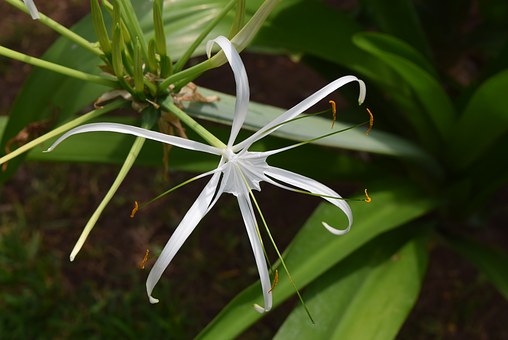
Grow it as you would grow hippeastrum, as mentioned previously, but instead, keep the bulb dry over winter as they may rot.
It is best to buy large bulbs otherwise the small bulb may not have reached flowering size yet. ‘Advance’ and ‘Sulphur Queen’ are the varieties to grow.
Grow in a cool but not cold temperature in moderate humidity in direct light. When actively growing keep moist but almost dry in winter.
BULBOUS IRIS (English, Spanish, Dutch Iris)
The variety to grow indoor is I. reticulata because of its small size, up to 60cm in height. In late winter purple flower appear that will most certainly brighten up a home.

To grow you need to plant named cultivars by placing 5 bulbs in one 13cm diameter pot in autumn by using a good, multipurpose compost. It is best to grow outdoor in a protected area and kept moist. Do not bring into the home until the flowers bud shows its colours.
Grow it in a similar position as crocus and an ideal position is a bright, sunny windowsill. Feed when the leaves are actively growing.
LACHENALIA (Cape Cowslip)
This South African bulbous plant had large, blue-green leaves, where it will grow up to 30cm in height. On top of the leaves attractive, tubular, red, yellow-purple blooms appear in January-March.
Plant bulbs in early to mid-autumn but the method used is determined by which variety is grown.
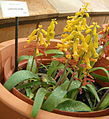
L. bulbifera should be grown in a hanging basket lined with moss. Set the bulbs in the moss with their tips pointing out through the holes, and level with the wire mesh. Set the bulb 8cm apart. Plant a few more bulbs sat the top and as the plants grow through the moss and a hemisphere of blooms are produced. The plant should be placed in a cool location, ideally 7 degree Celsius. Water sparingly until the foliage appears.
L. aloides (Opal Flower) is grown in a similar way but should be grown in pots instead of hanging baskets.
Grow it in a cool, well-ventilated in bright faltered sun in pots or hanging basket or pits. Above 13 degree Celsius, it may inhibit flowering. The compost must be moist at all times. When the foliage has died down, you need to tip out and separate offsets for use in planting later on in the year.
LILIUM (Lily)
This scaly bulb produces tall spikes of trumpet-shaped flowers that are often scented. The narrow leaves are borne either side of the stem. To grow plant bulbs in autumn to early spring, with the growing tip just protruding from the compost level. If it roots by the stem then it needs to be totally covered and planted deeper.
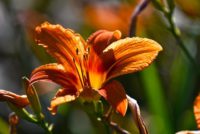
Grow it in a well-drained multipurpose compost and then place the container outside in a sheltered spot in the dark. When the bulbs have shown some growth then you can bring it indoors. You can then gradually introduce full light.
Grow in cool temperatures in filtered light, where the plants will be at their best. Like most bulbs, it need the compost to be moist at all times, but never waterlogged. Feed once in a while when in active growth. After flowering place, the pots outside and any offsets can be used to produce next year’s stock. The best variety to grow indoors is L. umbellatum.
NARCISSI
This well-known outdoor bulbs includes the daffodils. Flowering narcissi are wonderful houseplants, as many are scented. Narcissi are usually bought as bulbs in autumn and then planted in multipurpose compost. You need to choose varieties that are suitable for gentle forcing and in all cases, excessive warmth can stop the plant from flowering.
You need to buy specially prepared bulbs that flower much earlier than normal bulbs. The best narcissi to buy for indoor use is N. papyraceus ‘Paper White’ where each stem has a cluster of highly scented white flowers. N. ‘Tete a Tete’ has dwarf yellow flowering narcissus also makes a good specimen.

When planted Narcissi bulbs do not overcrowd or plant the bulbs too deeply, as the roots may push the bulbs up. Once the bulbs are planted just below the surface you need to keep it in a cool, dark place for eight weeks, such as a garden shed. Once shoot start to appear you need to move to a place that gets plenty of light, but still in cool conditions.
After 3 more weeks, the flower buds should appear and then you can move it to a bright but cool windowsill
This bulb produces light green, long strappy leaves and flowers in various shades of yellow, orange and white.
The compost must be kept moist at all time and it needs feeding once in a while with a balanced liquid fertiliser as the flowers appear. You need to plant the bulb outside once it has finished flowering. You can try repeated this trick with any small offsets that are produced.
NERINE (Guernsey Lily)
There is one variety of this bulb that can be grown outside, as it is hardy enough. The rest are tender and have to be grown indoor. It produces large, sword-like green leaves from which flowers of many colours appears that often glisten. It reaches a height of 60cm.
When buying bulbs go for the named hybrids and not those suitable for gardens. Plant bulbs in August, one bulb to each 13cm diameter pot. You need to plant 2/3 in the compost and 1/3 above the compost. Best to start its growing life in a sunny cold frame outdoor, or in a sheltered position.

Leave the compost dry before the bulbs show any sign of growth, then once growth begins water freely. After a few weeks, you can bring the plant indoors for flowering. Cutaway faded flowers and continue watering until the leaves start turning yellow.
At this stage allow the compost to go dry and store the pots in a sunny but dry location until the following year, where the offsets can be used for next year’s display.
Grow in a cool but not cold location in bright filtered light, as it will make an impressive windowsill display in autumn. The plant needs to be fed well as the plant grows.
ORNITHOGALUM THYRSOIDES (Chincherinchee)
This bulbs of grass-like green leaves produce 45cm tall spikes of white flowers. The best feature of this flowering spike is that it be cut and last for many weeks in water. Plant several bulbs in each container using a gritty, multipurpose compost. After it has flowered you need to move the container into a sunny location, but keep the watering up.
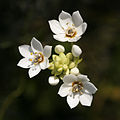
When the foliage dies you can start reducing the watering, allowing the compost to eventually dry out. Dig the bulbs out and in autumn you can then replant the bulbs once again.
Grow it in a bright well-ventilated windowsill during late spring and summer. It can be an untidy plant and may need support to keep it tidy. Any faded flowers should be quickly removed. Will need to be fed whilst it is actively growing.
SINNINGIA CARDINALIS (Cardinal Flower)
This tuber produces velvety green leaves with a purplish sheen. In top of these leaves, clusters of long, scarlet tubular flowers appear throughout the summer, where it grows up to 30cm in height.

It is best to grow as you would a begonia. You can plant tubers in 10cm diameter pots and may flower the same year if the tubers are planted in early spring It can be an untidy plant, so may need to be supported to keep the flowering stem from flopping all over the place.
Once the foliage dies back at the end of the year, you need to reduce watering to zero and let the pots go dry. Store over winter before repotting the next year. Grow it in moderate warmth and humidity in moderate shade. A compact plant that does not take much room.
Old tubers may not flower well and therefore new stock may be required.
SINNINGIA HYBRIDS (Gloxinia)
Few indoor plants have such large glamourous flowers as Gloxinia, The red, pink, and white trumpet-shaped flowers are produced in summer and autumn that dwarf the rest of the plant. This is saying something as the leaves are large, dark green and furry. The flowers match the velvety texture of the petals.
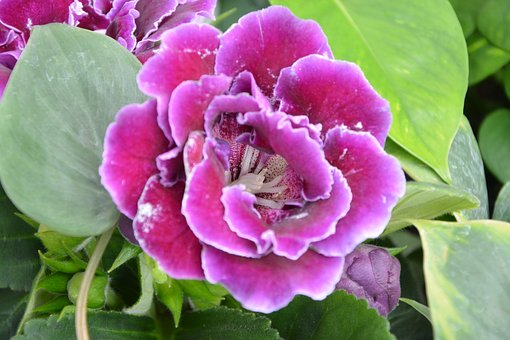
Grow one tuber to each 13cm pot in spring. Grow it in cool to warm temperatures in moderate humidity in bright, filtered light. Windowsills makes an ideal position, as long as it is kept away from direct sunlight.
It prefers to be watered with tepid water and not cold. It must be moist whilst still actively growing, but must not be overly wet. An occasional misting will not go unnoticed. Store any tubers as you would a begonia. The best flowers are obtained from 2-year-old tubers, so you may need to replace the stock frequently.
Water on the leaves can spoil the plant display so it is best to avoid this for happening when you water the plant.
TULIPA (Tulip)
This well-known bulb produces blooms of many colours depending on what type and variety is grown. The broad green leaves are not that spectacular but the blooms are.
Not all tulips can be grown indoors but all can be grown outdoors. You have to choose a variety of tulip that care suitable to be reared indoors. Dwarf doubles are easy to grow and so are desirable. They do well in groups in containers but do not mix different types as they will flower at different times. ‘Brilliant Star’ is a good variety to grow for gentle forcing as the crimson flowers look stunning.

Like most bulb it prefers the compost to be moist at all times. Grow it in a cool, airy, position in light shade to do well. Avoid high temperatures at all cost, as this can impact flowering.
For growing each year you need to buy new stock to produce your indoor display. The old bulbs can be planted in the garden, where any offset produced can be dug up and reused for next year’s stock. Narcissi, Tulips, Crocus and Hyacinth are treated the same way after flowering has come to an end, as the bulbs need to be planted outside after it has finished.
CONCLUSIONS
In this article, the best bulbous flowering houseplants to grow inside your home has been discussed. As you can see there are numerous bulbs that offer interest to the indoor garden, often providing beautiful blooms, scent and having a point of interest in your home.
One common feature of all bulbous plants is that they nearly all die back in winter before being reused again the following year. Crocus, Narcissi, Tulips and Hyacinths have to be planted straight into the garden, but they produce offsets that can be forced gently the next growing year.
The bulbs add an extra dimension to your houseplant collection, and are often easy to grow, as long as you get the right growing conditions, which is not difficult to do.
If you want to grow houseplants that others do not think about then bulbous houseplants are a way of adding extra interest.
If you have any questions that you may have or comments that you like to make, please do so in the comment box below.
Have a bulb light moment.

Having many plants around me, in my house and in my garden, I tell you that bulbous plants are my favorite. These plants offer a very natural environment and the multi-color energy gives you a positive feeling.
My favorite is Canna hybrids and I have one on the balcony of the house but I leave it outside on the windowsill. I also called it the little yellow queen. The most important is the flower which is sometimes very sensitive and when it is cold I keep the flower inside at a constant temperature. Thank a lot for this amazing article and all this useful explanation.
Regards.
Hi Nimrodngy
Thank you for stopping by and commenting once again. I got to admit canna plants are my favourite, as they add colour and beautiful leaves to any home, either inside or out. I believe in when showing lists, you need to show how to get the best from them.
Kind Regards
Antonio
Hello there,thanks for this awesome article it would be of great help to us all I have planting for sometime now but I haven’t worked with bulbous plant but I seen and heard alot about them…but after reading this article I think I would give them a trial in my houseplantimg project.
Hi Feji
It is great to hear from you again. Bulbs make a colourful and wonderful addition in the house, plus they are easier to grow. I hope you get some for the home.
Thanks
Antonio
Hey, I enjoy while reading your article and find many useful tips. Now I have better knowledge about growing indoor plants. It is only possible with the help of your beautiful guide. Crocus, Narcissi, Tulips and Hyacinths have to be planted straight into the garden after they have finished flowering indoors, but they produce offsets that can be forced gently the next growing year and can be planted in the home
The bulbs add an extra dimension to your houseplant collection, and are often easy to grow. Keep the awesome work.
Hi Parveen
Bulbs are a great addition to the home, where they can bring flowers to where colour is needed the most in the home.Thet tend to be easy to grow and look after. After this they can grace your outdoor containers to flower next year, so an extra bonus.
Thanks
Antonio
Flowers with their appearance gardens were beautiful during the spring and summer months, but the flower garden should be taken care of throughout the year. In January, the soil is fertilized with suitable fertilizers or the compost spread. Perennials that are stored indoors during the winter should be checked and watered occasionally, and that the bulbs should be stored and stored as they may happen to dry or rot. January is also a good time to plant begonias, cadiphs, petunias, cloves and other summer plants in a greenhouse. It’s all grown up at my home. Thanks for the post.
Hi Kozakiv
Thank you for your helpful advice in the forthcoming growing season, which is very important. I am concentrating on bulbous houseplants in this article, what varieties to choose and how to get the best from them. Feel free to look around my site for various tips to get the best from container gardens.
Come back and visit
Antonio.
Hi, I have been thinking for a while now to consider starting a small scale or something like a subsistence farming at the back of my house, and am so glad I was able to comeby your article which has given me some insight into what I wanted to do.
Am a lover of flowers, I love seeing flowers around, may be that is because I grew up from a family that has a wonderful history in agriculture.
I would definitely pull through with my plans and I think I would be basing on some tips I have learn from your article.
Thanks.
Hi Carol
Thank you for visiting. I wish you all the success in your forthcoming gardening adventure, bulbs are great plants indoors or outdoors, so do use them.
Kind regards
Antonio
Many thanks to you for giving us such a wonderful article and I really enjoyed reading your article because I love these bulbs. There are several flower trees on the porch of my house but they only add beauty to the flowers and leaves so I was thinking that I would put something on the porch of my house. I also wanted to find some plants and flowers to hang in the basket .Then I planted the Achimenes indet tree on my porch and after hanging it in the basket, it really impressed me and not only did it add beauty to the flower, it also has beautiful leaves and flower smells.The care of this tree is easier and easier to grow and the regular care is not enhanced by the beauty of my home. In the future, I would like to plant a tulip flower because these flowers attract me. I plant them both inside and outside my home .
The tips in your article will definitely be in my head and I will share my new experience with you soon .Finally, thank you again for giving The Best Bulbous Houseplants .
Hi
I always like reading your comments, as they are so full of delightful information. I believe as a gardener it is important to have a beautiful garden indoors and outdoors, especially in winter which can be a depressing time of the year. Having indoor plants in winter in flower often brightens up people’s day, as I hope it does for you.
Kind regards
Antonio
Hello Antonio, thank you for sharing this article on the best bulbous houseplants to grow. All these bulbous houseplants you have shared are really beautiful by my favourite among them is Hyacinthus. I love its beautiful features like the different colour of flowers and the strong scent. It looks very beautiful.
Hi MrBiizy
You have a good eye my friend. Hyacinths are such wonderful plants, full of colour and full of scent that will literally fill the home. It is such a delightful plant and I hope you think about using the other plants that I have highlighted in this article.
Kind regards
Antonio